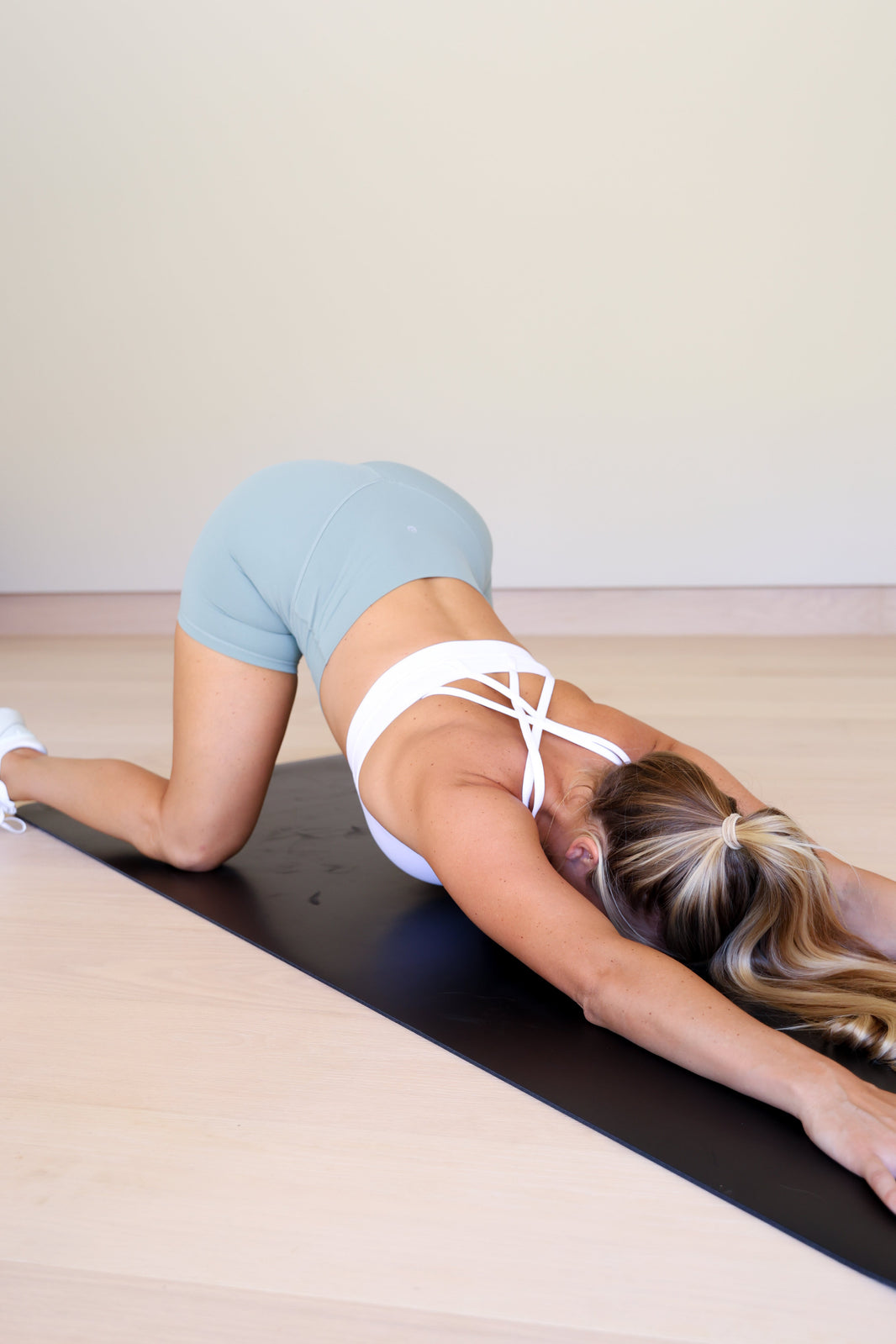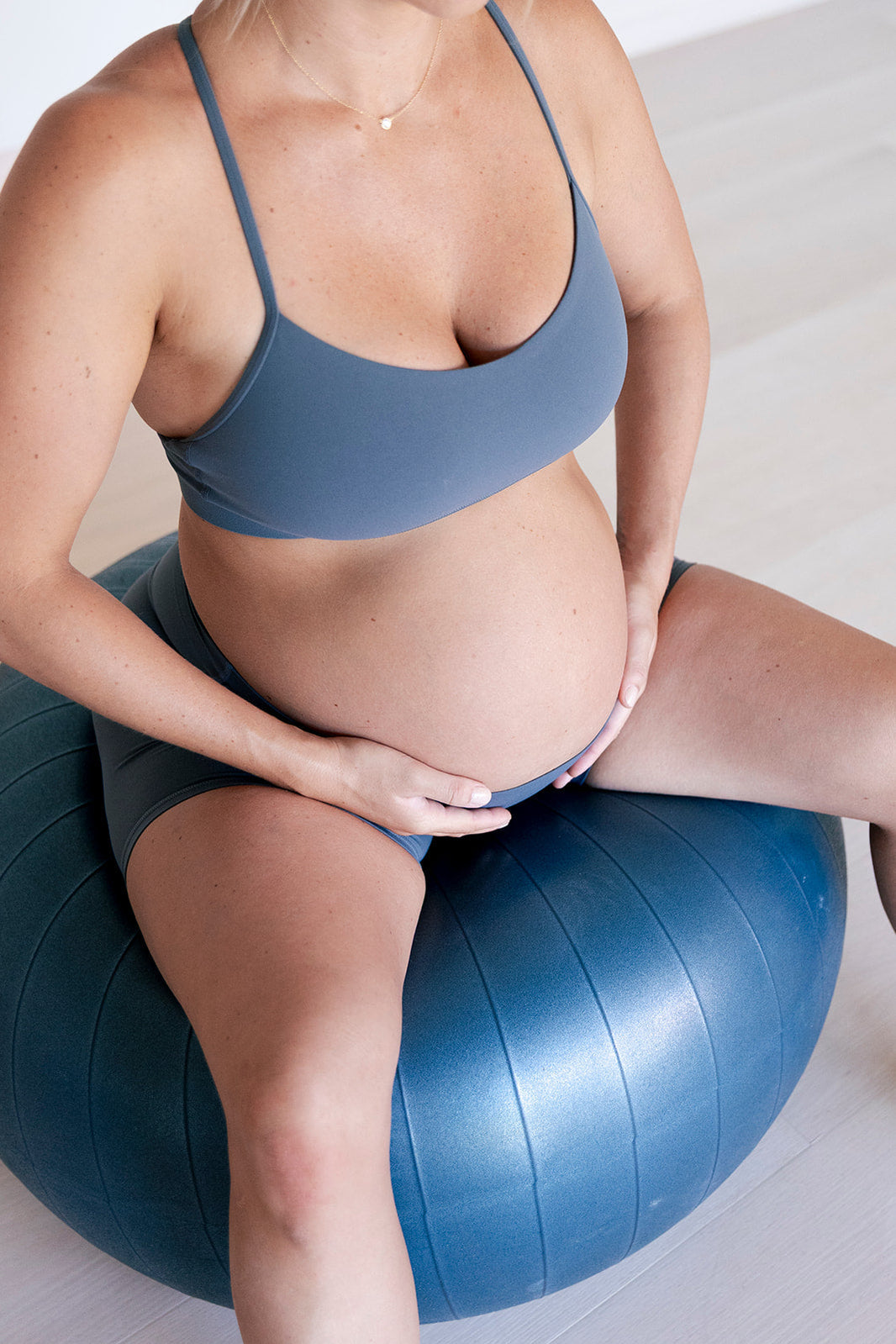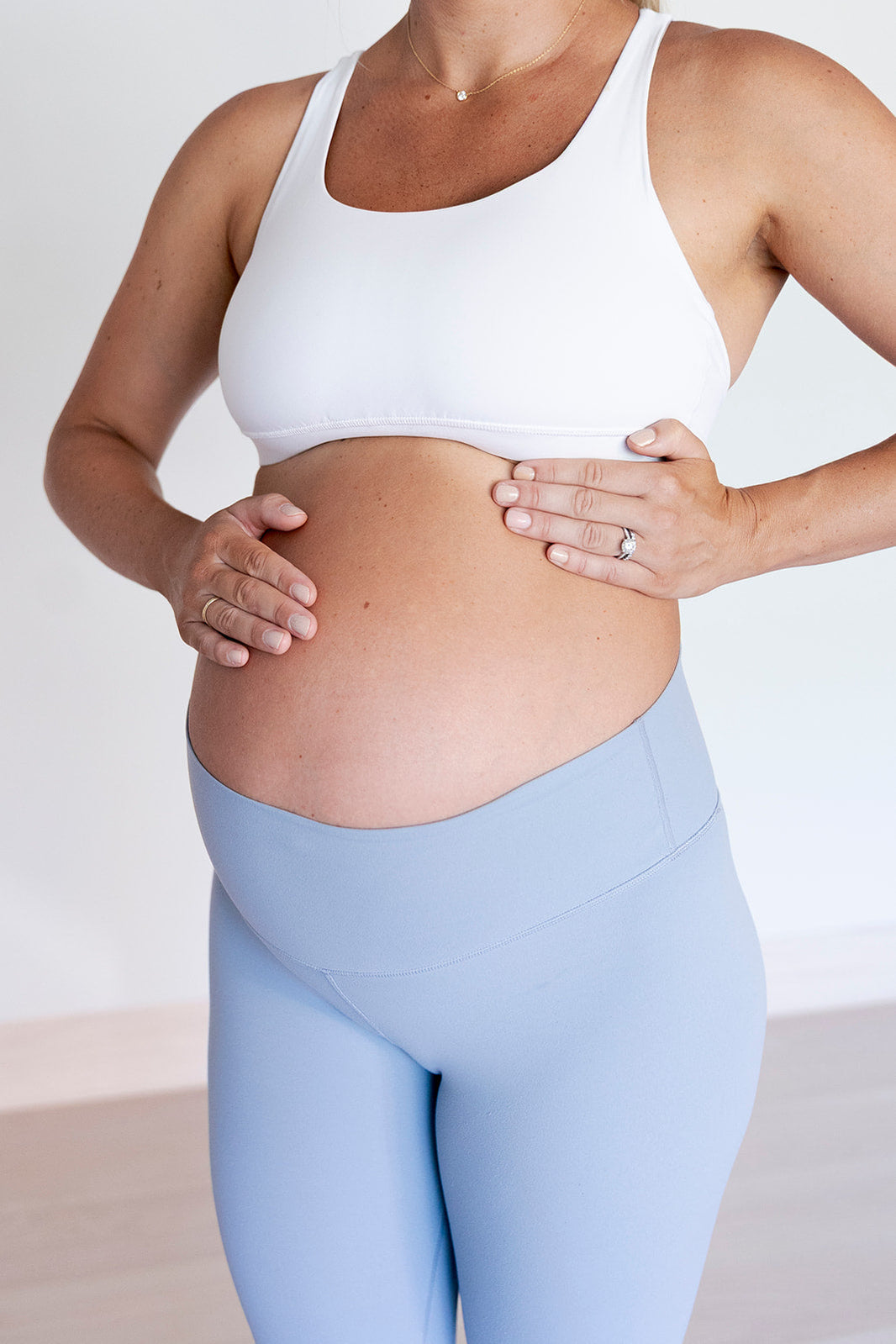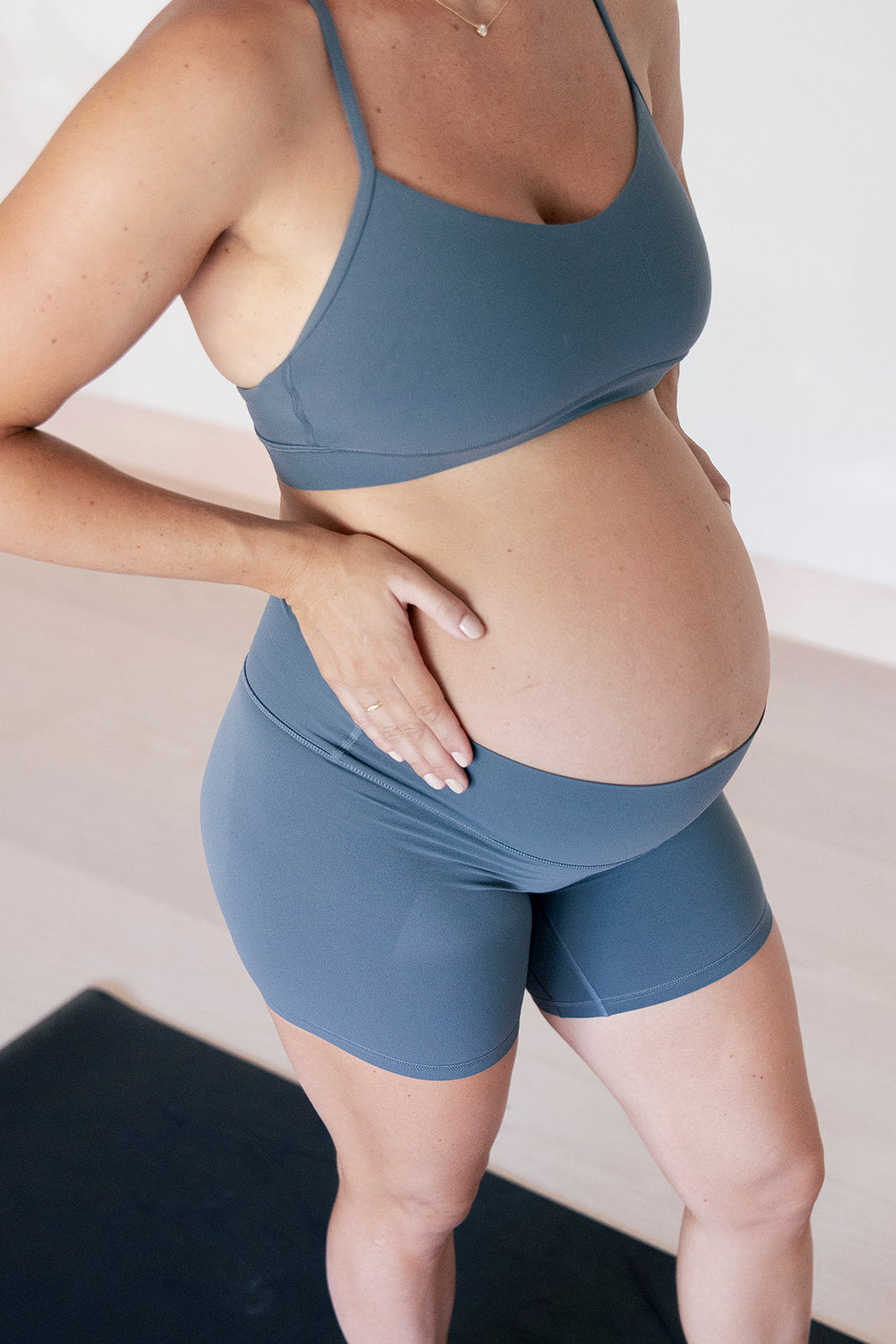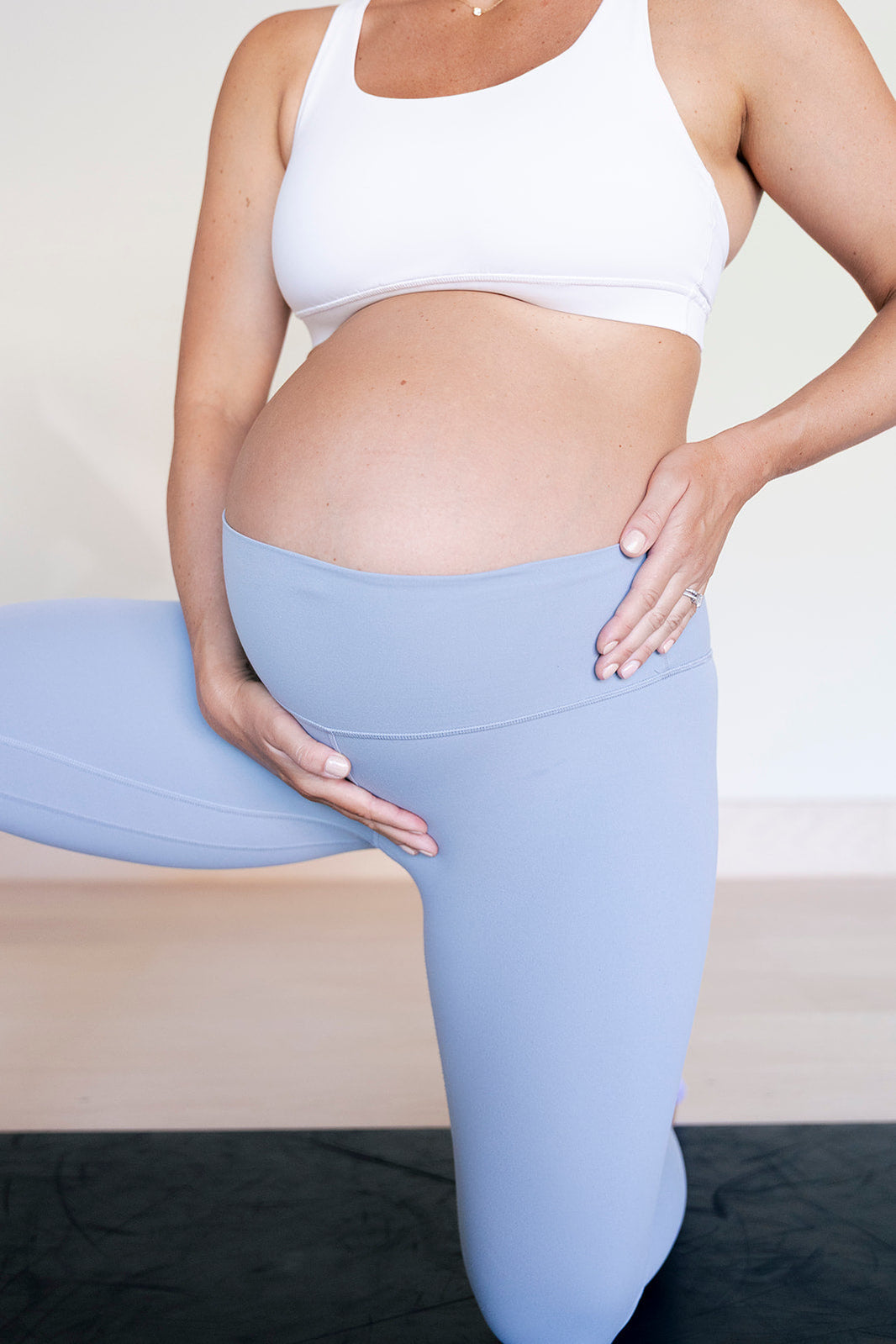Birth is a big deal—your body is doing some serious magic to bring your baby into the world! One of the most impressive things? Your pelvic floor muscles have to stretch up to 150% of their normal capacity. Yep, that’s a lot!
Here’s the breakdown:
- The deep pelvic floor muscles need to lengthen and descend from the pubic bone to the tailbone and open up as your baby starts their journey downward.
- The superficial pelvic floor muscles (closer to the surface) have to widen and open from sit bone to sit bone to let baby make their grand entrance.
- The posterior (back) pelvic floor muscles superficially and deeply do the majority of the stretching.
The perineum—aka the area between your vagina and anus—connects to your pelvic floor muscles, which act like a hammock to support your bladder, bowels, and even your spine. Pregnancy hormones (like relaxin and progesterone) help make everything stretchier, which is super helpful when labor begins. But here’s the thing: about 90% of vaginal births involve some kind of tearing or episiotomy, and 65-75% of moms need stitches. The good news? There are ways to prep your pelvic floor to help reduce tearing and make birth a smoother experience. Let’s dive in!
1. Stretch It Out!
Your pelvic floor needs to be flexible for birth, so let’s get those muscles nice and stretchy. Here are a few moves to work into your routine:
- Frog Pose – Opens up your hips and lengthens the pelvic floor.
- Happy Baby Pose – Encourages relaxation in your pelvic muscles and inner thighs.
- Child’s Pose – Stretches out your lower back and pelvic floor.
- Deep Squats – Help improve pelvic mobility and prepare your body for labor.
Try these daily, and don’t forget to breathe slowly while doing them!
2. Learn to Relax (Yes, Really!)
You might think “strong” is the goal, but when it comes to birth, relaxed is the real MVP. Tension in your pelvic floor can make labor harder, so let’s practice letting go.
Here’s how:
- Take slow, deep breaths and imagine air filling down into your pelvis.
- Visualize a flower blooming out of your vagina (yep, really!) to help encourage expansion.
- When you exhale, use sounds like ‘ahhhh,’ ‘ohhhh,’ or ‘uhhhh’ to help your pelvic floor stay soft and open.
- Try this breathing while stretching or even when you’re on the toilet—it’s great practice for labor!
3. Show Your Perineum Some Love
Starting around 34 weeks, perineal massage can make a big difference. Research shows that massaging this area helps increase flexibility and may reduce the risk of severe tearing. Here’s how to do it:
- Use clean hands and a bit of lubrication
- Place yours or your partners finger just inside your vaginal opening and gently press downward holding for 60 seconds and then down and outward to the right for 60 sec, and then down and outward to the left for 60 sec, repeat this 3 x through. You can work gradually on tolerating this stretch and then move into U shaped pressures.
- You can do this yourself, ask your partner for help, or use a perineal massage wand (Frida and Intimate Rose make great ones!).
- Aim for every other day leading up to birth.
4. Use a Warm Compress During Birth
A little warmth can go a long way, momma! Research shows that using a warm compress on your perineum during labor can reduce severe tearing and make things more comfortable. Here’s how:
- Soak a soft cloth or pad in warm water (between 113-138°F).
- Wring it out and gently press it against your perineum between contractions.
- Have your birth team keep it warm throughout labor.
This simple trick helps soften the perineum and gives it extra stretch when baby’s head starts to emerge.
5. Slow and Steady Wins the Race
One of the best ways to reduce tearing? Take it slow when baby is crowning. Rushing this stage can increase your risk of tearing, but controlling the speed can cut the risk in half!
Here’s how:
- Your midwife or birth provider may coach you through this stage, helping you breathe or pant instead of pushing too hard.
- If needed, they might apply gentle pressure to your baby’s head to slow things down.
- Practicing this sensation can help—try mimicking it while having a bowel movement. Instead of forcing things out, breathe through it and let your body do the work.
6. Build Healthy Pelvic Floor Habits
Your daily habits matter, momma! Here are some ways to keep your pelvic floor happy and ready for birth:
- Use a Squatty Potty – Helps align your pelvis for smoother bowel movements.
- Don’t Strain on the Toilet – Breathe and relax instead of forcing things.
- Sit on Your Sit Bones – Avoid slouching or tucking your pelvis under, which can tighten your pelvic floor.
- Relax Your Glutes and Jaw – Clenching your butt or jaw can create tension in your pelvic floor. Try to stay loose!
- Manage Stress – Holding onto stress can lead to a tight pelvic floor. Deep breaths, movement, and self-care can help.
Mama, your body is strong, capable, and made for this. Preparing your pelvic floor isn’t just about preventing tears—it’s about making birth smoother, helping you feel more in control, and setting yourself up for an easier recovery postpartum.
Try these tips, be kind to yourself, and trust that your body knows what to do. You got this!
References:



